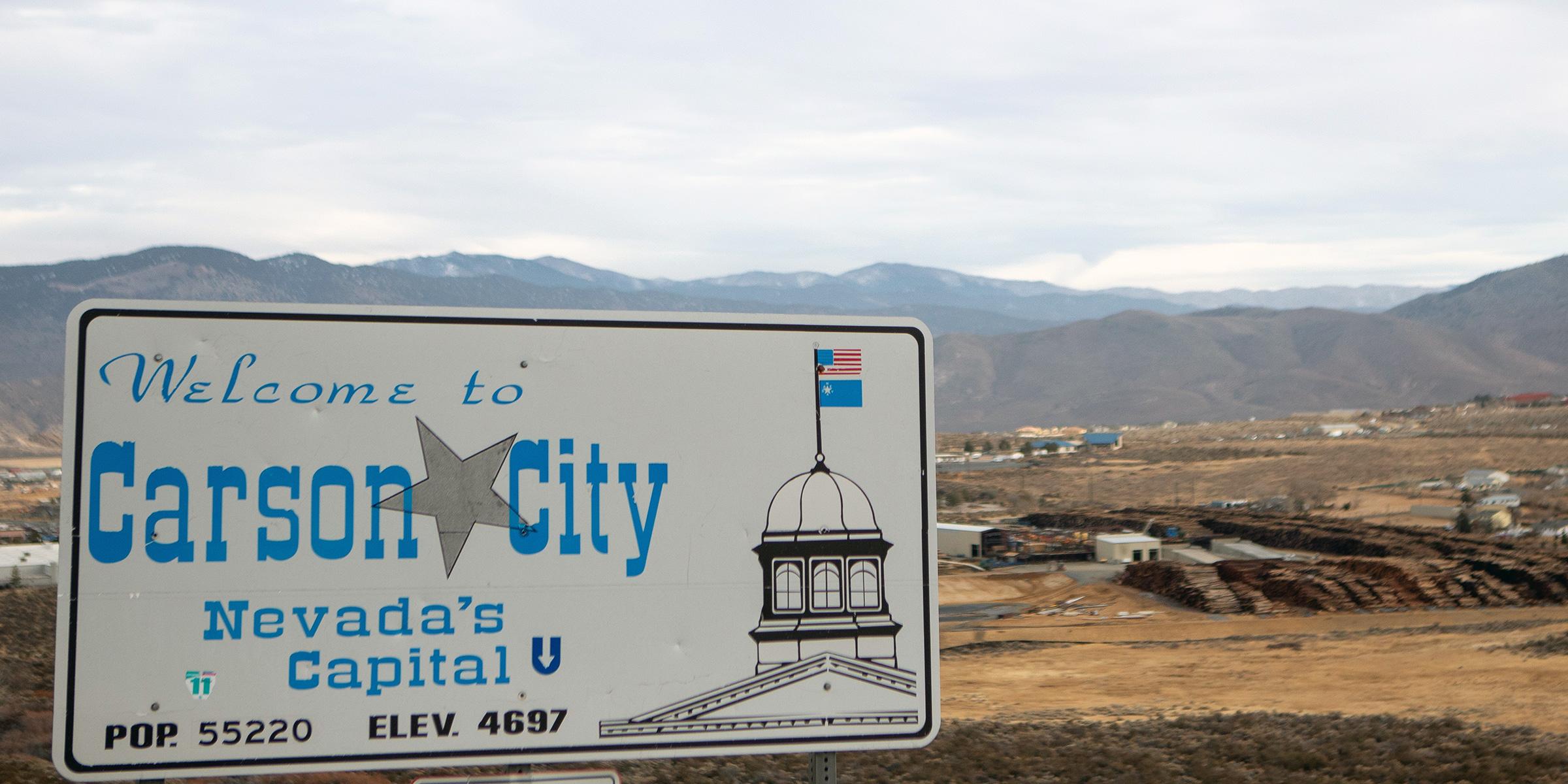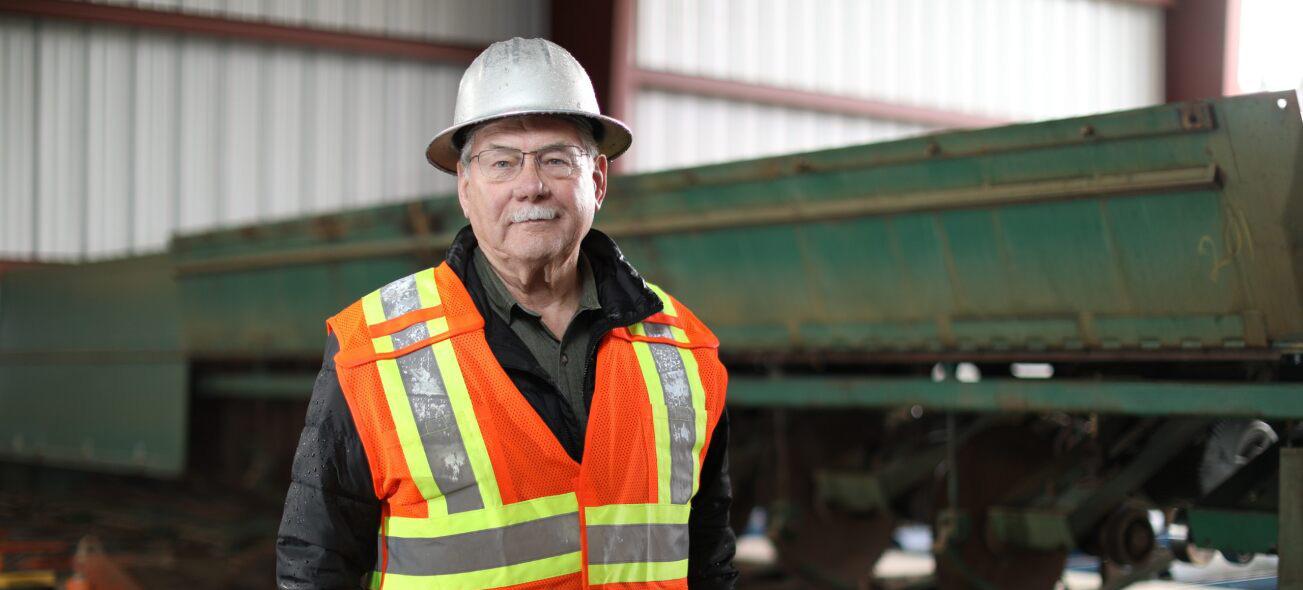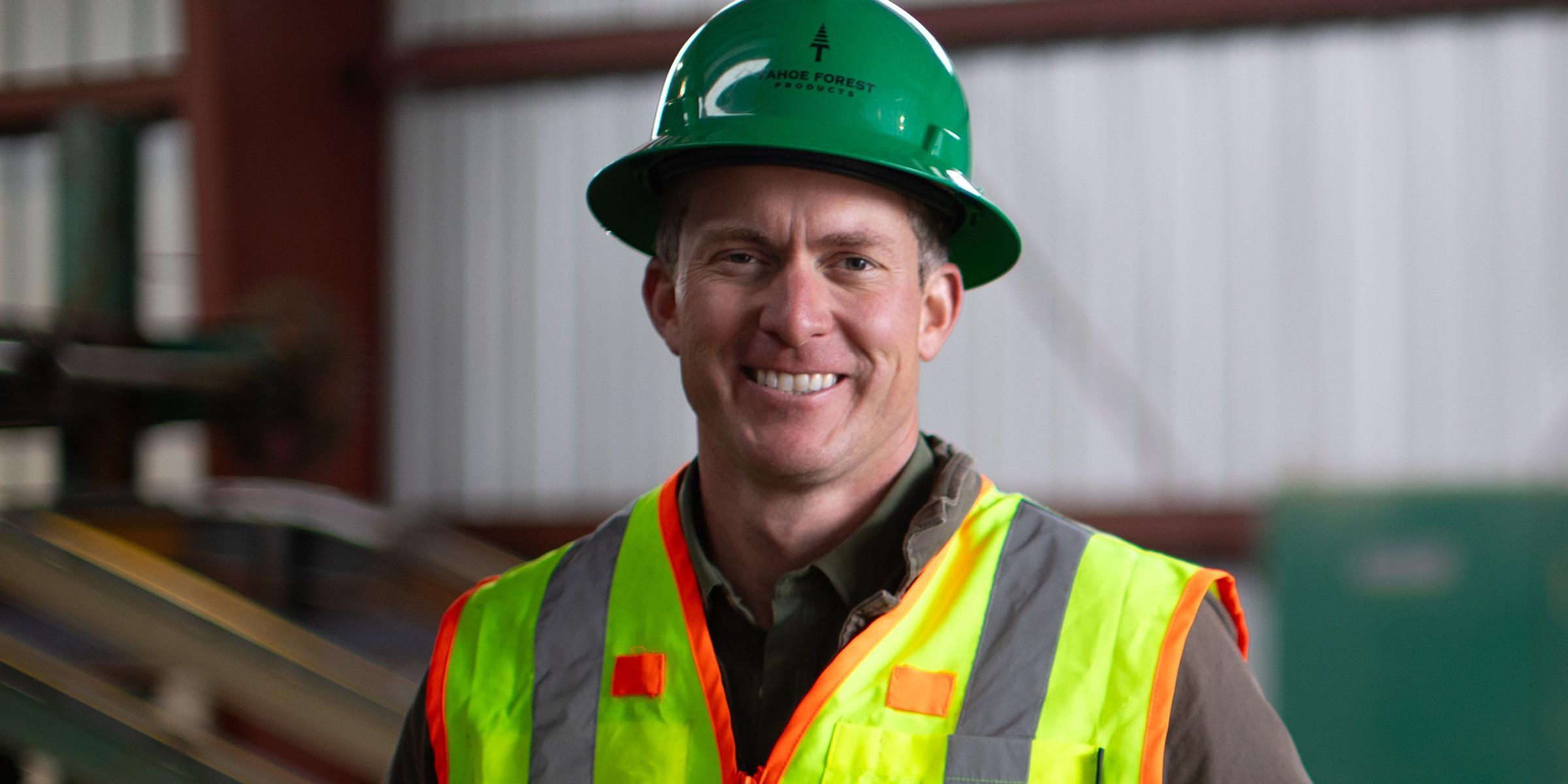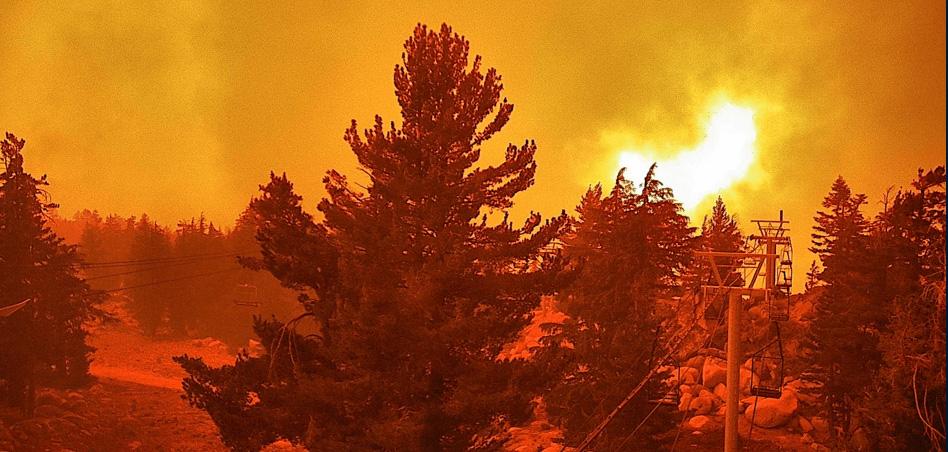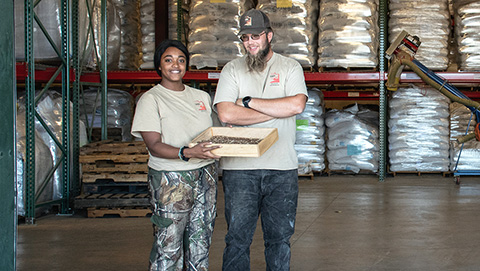A sawmill — filled with rotating disks of jagged, cutting knives — may seem at odds with forest health. But those familiar with land management will tell you it’s part of the solution. A newly opened sawmill in Carson City, Nevada, will soon provide the means to support healthy forests, post-fire recovery efforts, and the local economy.
“The truth is, the forest, it needs our help,” said Serrell Smokey, Tribal chairman for the Washoe Tribe of Nevada & California, at the Tahoe Forest Products sawmill opening Dec. 18, 2023, “Our people have intervened in these areas since the beginning of time, because otherwise, if we don't take care of it, it will take care of itself.”
Chairman Smokey is referring to the number of devastating wildfires that have affected Nevada and eastern California in recent years because of overly dense forests that are two or three times as many trees as there were 300 years ago.
While dense forests seem ideal to some, many trees in these areas are unhealthy due to competition for water, sunlight and nutrients. And since tree-dense stands are often stressed, they are more susceptible to attack from bark beetles and disease.
That’s where a sawmill like the one built by Tahoe Forest Products provides an opportunity. Its close proximity to dense forests is ideal to restore forests in these areas.
The timber industry has continued to evolve, said Mary Farnsworth, USDA Forest Service regional forester for the Intermountain Region. She explained that modern industry focuses not just on profit but sustainable practices that are good for the forests and the communities they surround.
Farnsworth oversees more than 32 million acres of national forests and grasslands across six states and has worked for the Forest Service for 37 years. She said she has seen a declining forest products industry during her time, but that this particular mill opening in Carson City just might be a shift.
“I have been to a lot of old mills. I've been to a lot of retooled mills, but I have never been to a sawmill opening in my career,” said Farnsworth. “It is really exciting to be here and have a new mill that is going to help us get the work done.”
A checkered past
Like a two-person saw, timber-industry practices and public opinion have been in constant motion.
In the 1840s when settlers first arrived in Eagle Valley, where Carson City stands today, demand for timber was high. It was needed to build houses, fencing and railways. After the discovery of gold and silver, timber was used as support beams in mines.
The unbridled use of forests for timber during this period often led to bare, degraded, moon-like landscapes. And the public backlash that followed led to the rise of the nation’s first professional foresters and early conservationists in the early 1900s.
Another major shift took place during the 1980’s and 1990’s, when conflicting paradigms between conservation and preservation would again change the industry.
Tony Sims, the log procurement manager for Tahoe Forest Products Mill, said he remembers those contentious times well. He has seen some big changes in the industry during his 44-year career. After he finished forestry school, he went to work in the woods and in 1986, moved to California to work for P&M Cedar Products.
“They were responsible for much if not most of the pencil stock in the free-world market,” he said with a smile that hints at the pride common among many veteran foresters. “It was a good career. Then, in 1990, I lost my job — it was a tough period.”
That tough period is well documented. A time when heated public policy debate led to conflicts between loggers and preservationists— the Timber Wars. The resulting policy changes affect the industry to this day.
“When I first came to California, there were 135 sawmills. Now there may be 30. Big changes. And a bunch of us lived through it.”
The opening of the Tahoe Forests Products Mill signals a renewed importance for the role of industry in caring for the land.
“There hasn't been a mill of this size on this side of the range for over 100 years. And now more organizations, environmental groups, residents are talking with folks in the forest products industry, wanting to come up with solutions,” said Sims.
“I love this business and I love working in the woods. That's the best part of this job. And most of us work in this industry because we love it, not because we're going to get rich.”
The economics
Though the main goal might not be to get rich, that is not to say that money does not matter, said Annabelle Monti, a Forester on the Humboldt-Toiyabe National Forest’s Carson Ranger District.
She grew up in the area and her love of the outdoors goes back as far as she can remember. She grew up backpacking and camping with friends and family, later studied forestry at the University of Nevada in Reno, Nevada.
It is her job to look at vegetation management on a large scale. She identifies areas where appropriate forest management can support healthy ecosystems, reduce wildfire risk to communities, or restore landscapes that have been damaged by wildfire.
“We are not just cutting trees to cut trees. There is a very extensive, rigorous process that goes into determining where we can do what type of work,” said Monti. “There is a lot of work to be done, with significant challenges to get the work done. The timber industry and contractors that do that kind of work are an essential part of this conversation.”
There is a mutually beneficial relationship here – land management agencies need to treat landscapes and the timber industry needs timber. There used to be an old saying of “trees paying their way out of the woods.” That meant the value of the timber would help offset the cost of treating an area. While that’s not the reality on the eastern side of the Sierras, having a mill infrastructure in proximity drastically improves the economics of the type of work that’s needed to restore landscapes in the West.
When timber business makes assessments about when and where to take on a contract, they look at a number of factors — fuel and labor costs, and market prices for timber. But there is one factor that tends to be the most prohibitive — distance.
The further a log has to travel to arrive at the nearest mill increases fuel and labor costs and decreases a business's profit. Depending on all the variables, the breakeven distance is about 50-80 miles from forest to mill.
Before the opening of Tahoe Forest Products mill in Carson City, the closest mill was in Quincy, California. That’s more than 100 miles from many of the areas that need work on the Humboldt-Toiyabe National Forest.
“Since the mill has opened the conversation has definitely changed,” said Monti, “Now contractors are calling and saying, ‘hey, I heard this new mill went in. I'm really interested in doing work on this side of the mountain.’... We have not had that option for the last several decades.”
Tahoe Forest Products Mill’s first success
That increased interest from industry comes at an important time. The need for land management is essential to reducing wildfire risk to communities and restoring burned landscapes.
For Kevin Leary, chairman of Tahoe Forest Products, there is not a better or more recent example than the 2021 Caldor Fire, which burned around 221,835 acres in El Dorado, Alpine, and Amador Counties in eastern California. “If you look at how that fire burned and eventually was stopped in South Lake Tahoe, you can see how fuel treatments enabled firefighters to stop it there. Without industry to do the work there, it would have been a different story.”
After a fire, there is even a greater need for a sawmill. The Tahoe Forest Products Sawmill was awarded a grant from the Forest Service to refit their mill to take salvaged timber from burned areas and be able to handle various sized logs. In fact, one of the mill’s first major project was to salvage timber from a ski resort affected by the Caldor Fire.
“The Caldor Fire ripped through the Sierra-at-Tahoe Ski Resort, leaving dead standing trees, that were falling all over. In that condition, the ski resort would have never reopened,” said Leary. “But we created an outlet for those trees, some place close by where contractors could take that material.”
In total It is estimated that 22 million board feet were removed from the Sierra-at-Tahoe Ski Resort. By comparison, the average American home uses about 15,000 board feet. That is a little more than 1,400 homes.
“And that is just one example. Multiple forest health and fuels reduction treatments have gone without bid around here for the past five or 10 years,” said Leary.
Restoring areas affected by the Caldor Fire is just one example of large-scale outcomes that the Forest Service and other land managers are striving towards. Another is working to reduce wildfire risk on large parts of the landscape.
Tahoe Forest Products Sawmill will soon play a huge part in this effort by assisting the Forest Service on two Wildfire Crisis Landscape Projects. These two projects include the Sierra Front Landscape, which encompasses nearly two million acres on the east side of the Sierra Nevada Mountain Range, and North Yuba Landscape which totals 313,000 acres northwest of Lake Tahoe.
Ultimately, Tahoe Forest Products aims to sell 50 to 60 million board feet of lumber each year.
There is a lot of work to be done in this area, which means there will be a lot of work for the Tahoe Forest Products Sawmill,” explained Leary, “Hopefully by the end of 2024 this facility will sell 50 to 60 million board feet of lumber, employ 75 people, and support thousands of more industry jobs in the area.”

